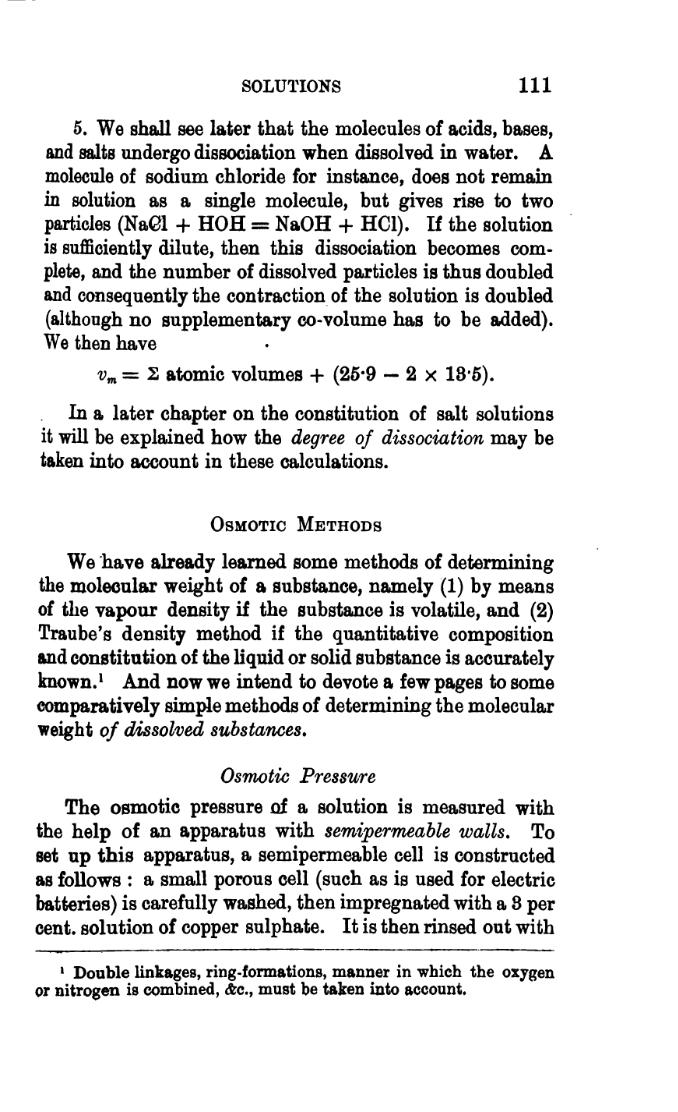5. We shall see later that the molecules of acids, bases, and salts undergo dissociation when dissolved in water. A molecule of sodium chloride for instance, does not remain in solution as a single molecule, but gives rise to two particles (NaCI + HOH = NaOH + HC1). If the solution is sufficiently dilute, then this dissociation becomes com- plete, and the number of dissolved particles is thus doubled and consequently the contraction of the solution is doubled (although no supplementary co- volume has to be added). We then have
v m = 2 atomic volumes 4- (25*9 — 2 x 18*5).
In a later chapter on the constitution of salt solutions it will be explained how the degree of dissociation may be taken into account in these calculations.
��Osmotic Methods
We have already learned some methods of determining the molecular weight of a substance, namely (1) by means of the vapour density if the substance is volatile, and (2) Traube's density method if the quantitative composition and constitution of the liquid or solid substance is accurately known. 1 And now we intend to devote a few pages to some comparatively simple methods of determining the molecular weight of dissolved substances*
Osmotic Pressure
The osmotic pressure of a solution is measured with the help of an apparatus with semipermeable walls. To set up this apparatus, a semipermeable cell is constructed as follows : a small porous cell (such as is used for electric batteries) is carefully washed, then impregnated with a 8 per cent, solution of copper sulphate. It is then rinsed out with
1 Double linkages, ring-formations, manner in which the oxygen or nitrogen is combined, &c, must be taken into account.
�� �
